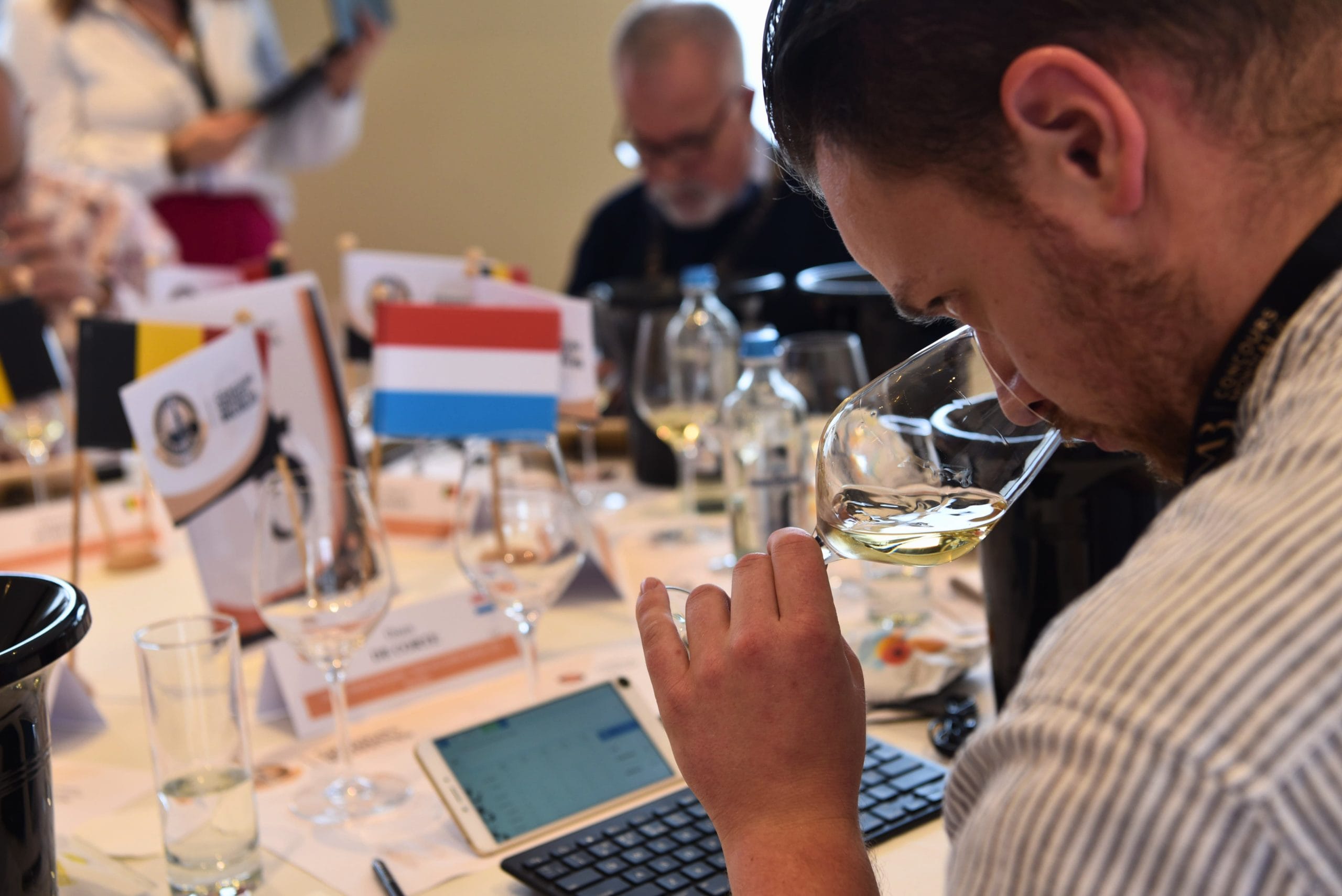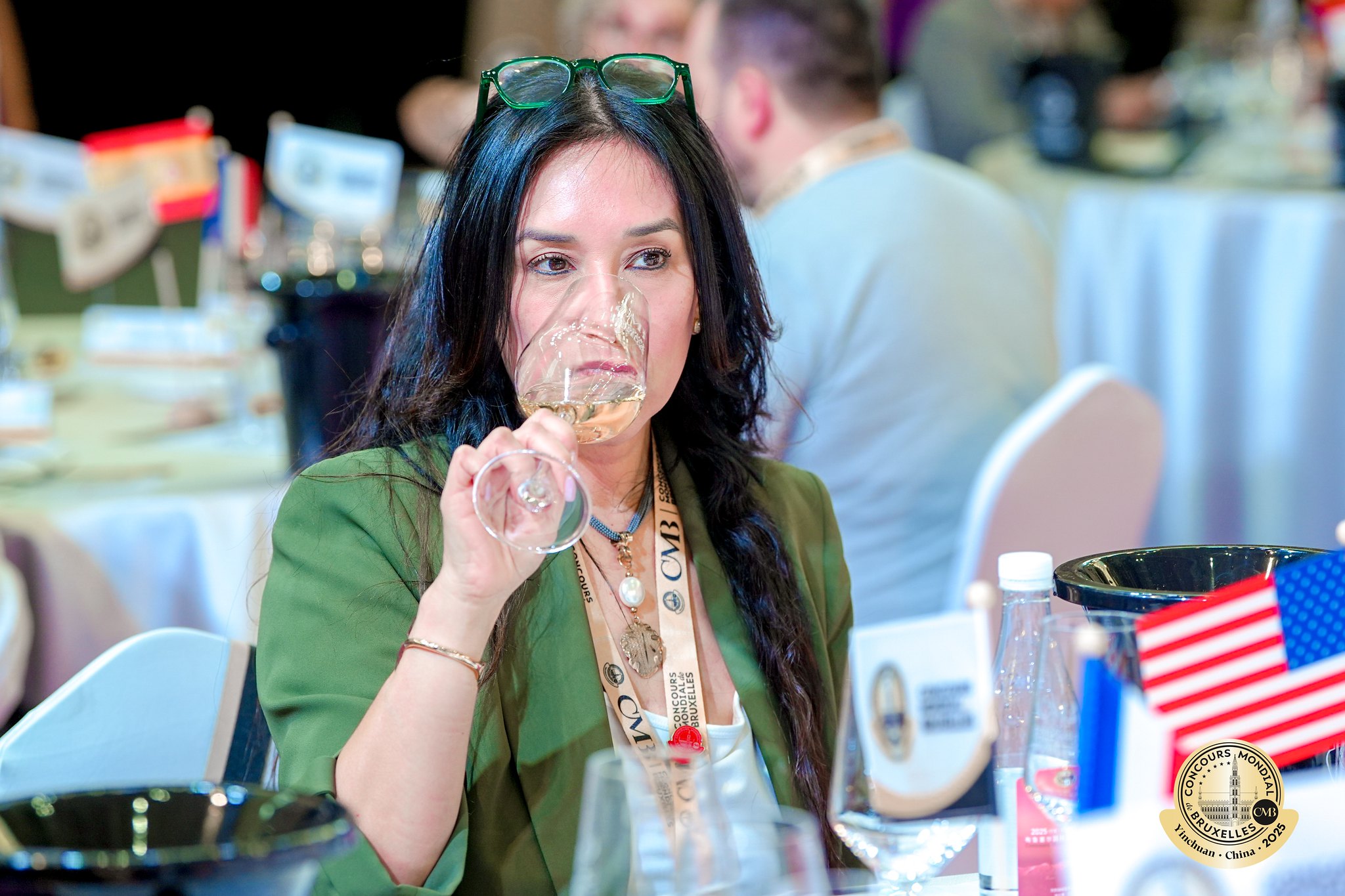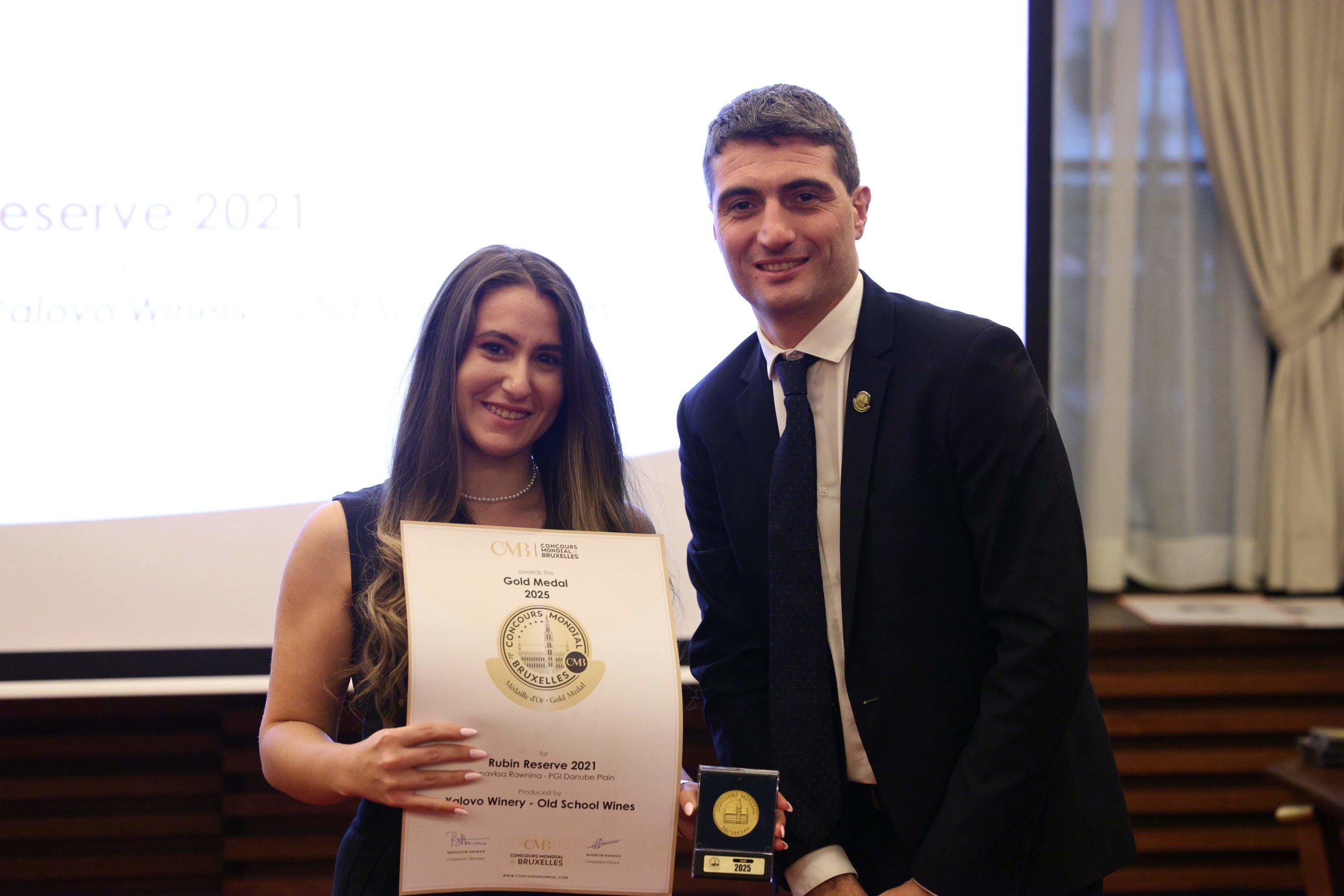Start of the Sweet and Fortified Wines Session: Exceptional niche products

On October 1, 2024, 27 international tasters from 9 different nationalities gathered to participate in a blind tasting of the samples entered in the Sweet and Fortified Wines Session of the Concours Mondial de Bruxelles. This year, more than 300 wines from 23 countries are competing.
To promote and showcase sweet and fortified wines, the CMB is using this session to introduce sommeliers and jury members to two exceptional wine styles: Tuscany’s Vin Santo and Madeira wines. Through two workshops led by professionals, Mattia Cianca and Rubina Vieira, the jury will explore the richness and diversity of these exceptional products.
The results of the Sweet and Fortified Wines Session will be published on October 10 on concoursmondial.com
Madeira wines are often relegated to culinary uses, and those marketed for this purpose are usually of lower quality. This lack of awareness of quality Madeira wines results in low consumption in our regions, unlike in countries such as the United Kingdom or the United States, where great Madeira wines are appreciated as much as premium still wines and are found on the finest tables.
There is, after all, Madeira and Madeira… Different vinification and heating methods, years of maturation in oak barrels, and the choice of various grape varieties result in some of the most complex and prestigious wines in the world.
Vin Santo is a straw wine that follows a complex process, a result of the experience of traditional Tuscan winemakers. It is a traditional product found in almost all of Tuscany, with slight variations in production techniques.
The grapes used for Vin Santo from Chianti Classico are all white (Malvasia and Trebbiano), and once harvested, they undergo a very particular transformation process. The freshly picked grape bunches are hung on wooden racks in ventilated rooms, where they dry for several months. This process facilitates the evaporation of much of the water contained in the grapes, increasing the percentage of fructose, which remains inside the grapes.
After this drying process, the grapes are pressed. The must is then transferred into small wooden barrels called “caratelli,” filling them three-quarters full. The caratelli are hermetically sealed to create high pressure during fermentation. Moreover, the location where the barrels are stored is subject to significant temperature variations, which slow down the fermentation process and give it its uniqueness.
Since part of the sugar does not ferment, the result after three years is a naturally sweet wine, which can be enjoyed at the end of a meal with desserts or blue cheeses.
Find photos from the competition and workshops via this link flickr.com/photos/concoursmondial/albums/72177720320773558
About the competition
The Concours Mondial de Bruxelles is an international competition, divided into Sessions and Selections, where over 15,000 wines and spirits are entered to be judged blindly by a panel of experts. Our experienced judges evaluate the products in the competition with a guiding principle: to distinguish products of impeccable quality, without bias from the label or the prestige of an appellation. The CMB is one of the most important international events of its kind.
Press Contact:
Benoît Carion
benoit.carion@vinopres.com


